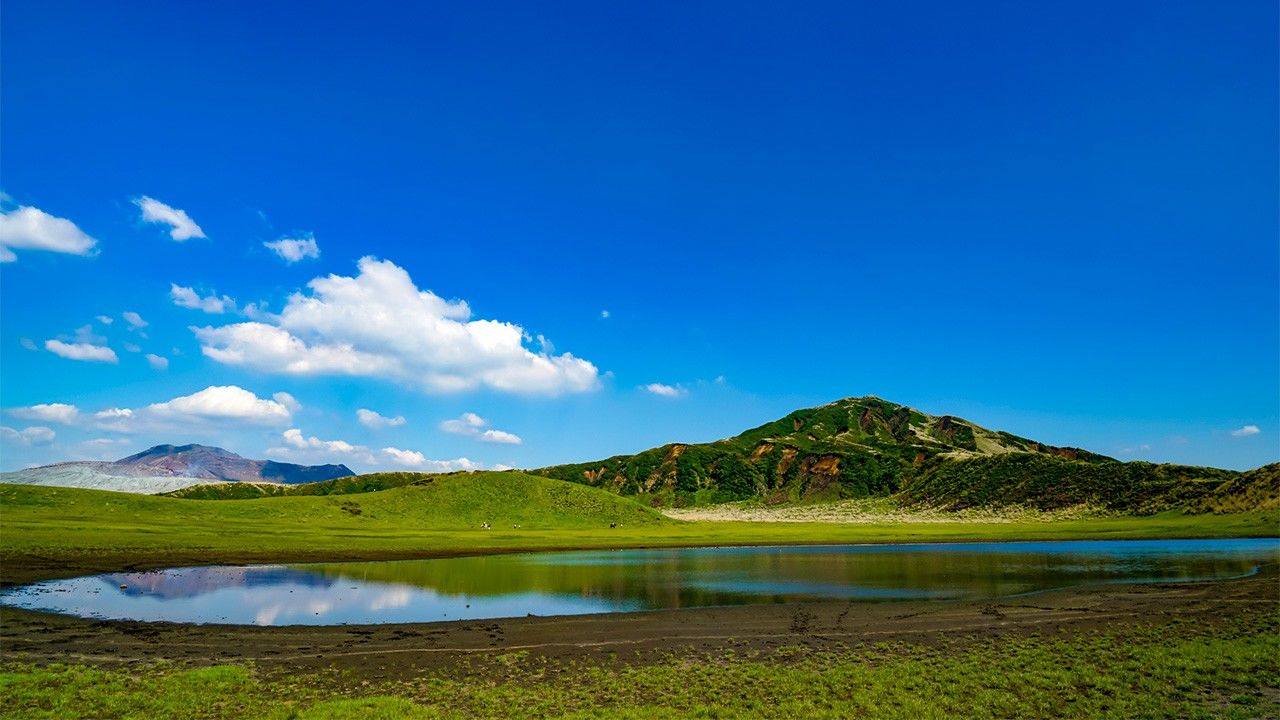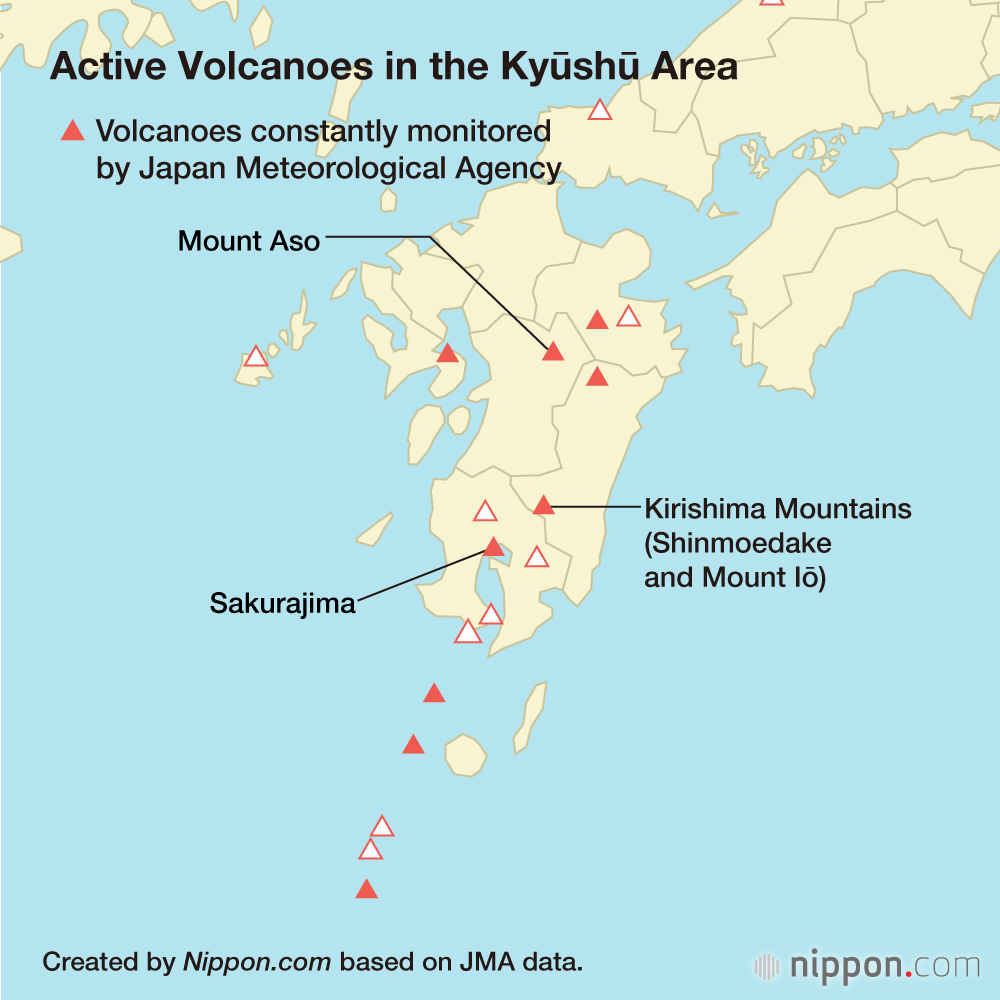
Mount Aso: One of the World’s Largest Calderas
Society Travel- English
- 日本語
- 简体字
- 繁體字
- Français
- Español
- العربية
- Русский
A very small volcanic eruption occurred on Mount Aso, Kumamoto Prefecture on April 16, 2019. The Japan Meteorological Agency cautioned people to take care of large flying cinders and pyroclastic flows within a one-kilometer radius of the active crater.
Mount Aso is not actually a single mountain. The huge caldera, which measures 25 kilometers north to south, 18 kilometers east to west and 100 kilometers in circumference, is one of the world’s largest. The Aso Gogaku or “five Aso mountains” in its center are generally collectively referred to as Mount Aso. These five are Mount Taka, Mount Naka, Mount Eboshi, Mount Kishima, and Mount Neko. Although Mount Naka remains active, some 50,000 people live within the caldera.
Mount Aso has had four large-scale pyroclastic flows in the past—90,000, 120,000, 140,000, and 270,000 years ago. These huge eruptions caused the underground magma chambers to empty and the land to collapse, forming the giant caldera. Following that, volcanic cones formed in the center of the caldera and became the five Aso mountains that can be seen today. Mount Aso is a central meeting point for the row of volcanoes running east to west, including Mount Yufu, Mount Tsurumi, and Mount Unzen, and those running north to south, such as the volcanic island of Kuchinoerabujima, Sakurajima, and the Kirishima Mountains.
The oldest surviving records for eruptions on Mount Aso stretch back to the year 553; all have come from Mount Naka. There have been a repeated number of eruptions over the centuries. Mount Naka has seven craters, each referred to by number and since 1940, only Crater 1 has been active.
| June 1958 | A sudden explosion sends a large amount of ash over the entire mountain slopes, killing 12 people and injuring 28. |
| October 1965 | Explosions throw out a huge number of volcanic cinders, which damage buildings. Activity continues until the end of the year. |
| January–June 1975 | Continuous eruptions start with multiple earthquakes in late January. Earthquake on January 23 measures magnitude 6.1 or up to 5 on the Japanese seismic intensity scale. |
| January 1980 | Explosion with tephra (rock fragments and particles) fallout. |
| March 2011 | After the Tōhoku earthquake and tsunami, earthquake activity temporarily increases approximately 10 kilometers northwest of the crater. |
| January 2014 | Small-scale eruptions continue intermittently up to mid-February. |
| November 2014 | Eruptions start from November 25 and continue until May the next year. |
| September 2015 | Plume from an eruption rises 2,000 meters above the crater. |
| April 2016 | Kumamoto earthquakes. |
| October 2016 | First explosion in 36 years. The plume rises 11,000 meters. |
| April 2019 | Small-scale eruption. |
(Compiled by Nippon.com based on the websites for Japan Meteorological Agency, the municipality of Aso, Aso Volcano Museum, Aso Volcano Disaster Prevention Council, and Aso Geopark were used for reference. The timeline covers only recent main events and is not a complete list of all volcanic activity.)
(Translated from Japanese. Banner photo: Mount Naka. © Pixta.)
